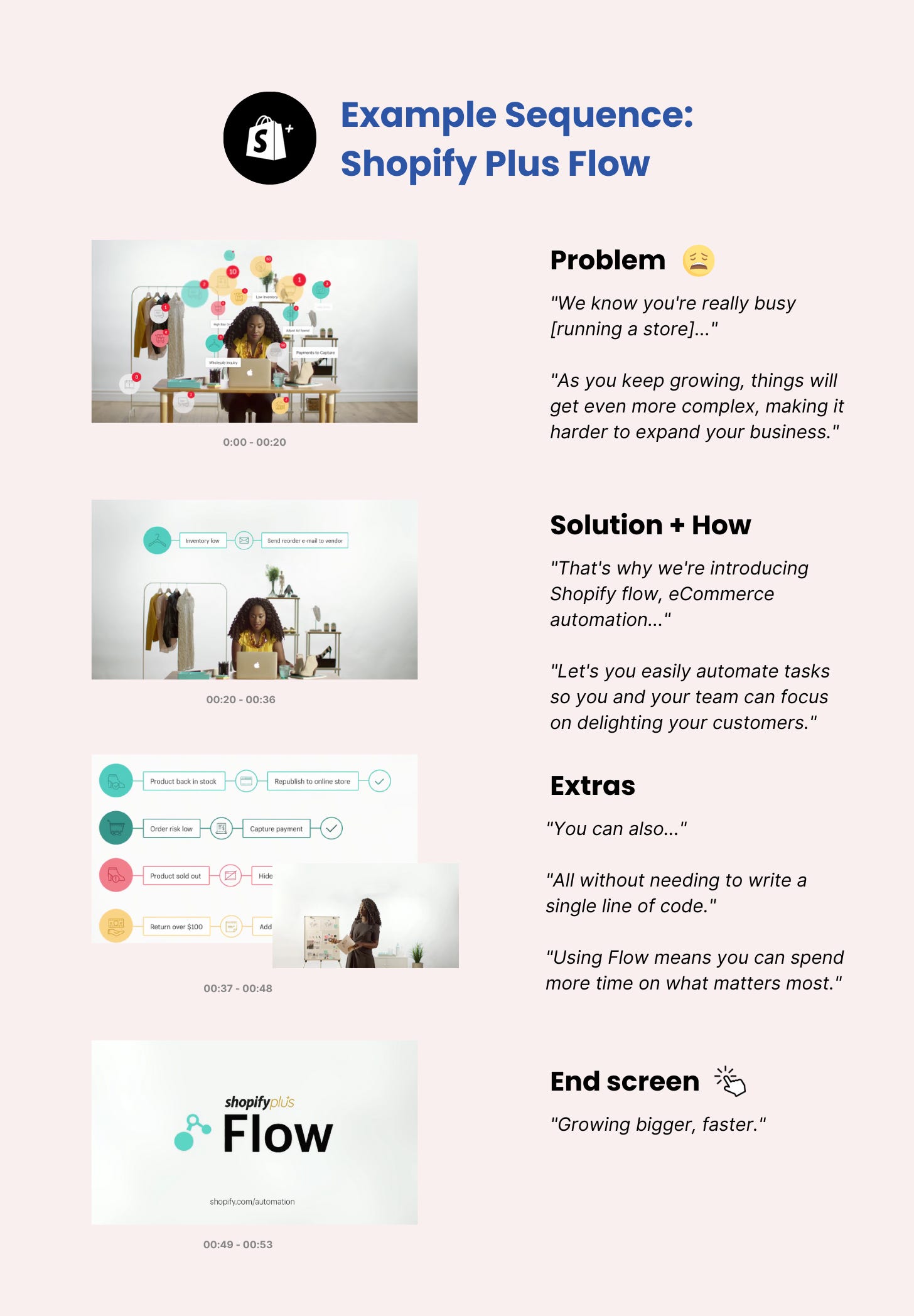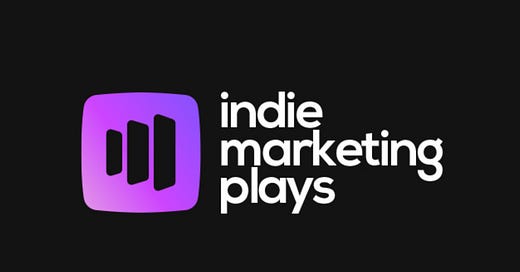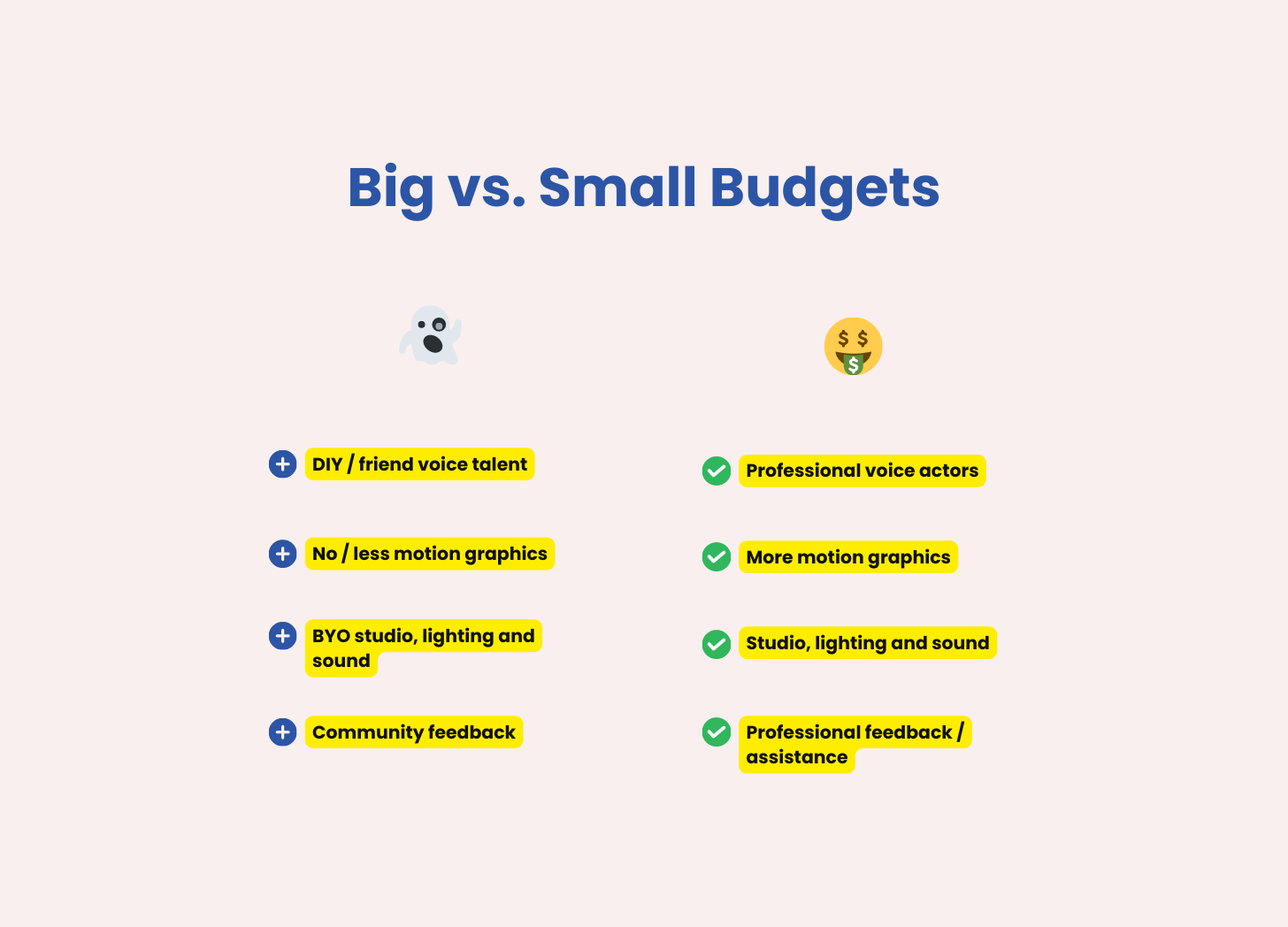Recent data found that 79% of people say watching a video has convinced them to sign up for an app.1
But too many of my favorite products don't even have one.
Hunting for best practices, I connected with
, who explained:What exactly to put in the video
How (bootstrappers) can put one together
Annoying mistakes to avoid
And how to give your video the X factor
Here are the details:
Important note: The following is a summary written by me based on the interview, not quotes. Please listen to the audio version for the exact wording.
What to put in your video?

👉 Here are some tips want to put in the video itself:
Start with the main problem. There can be a temptation to add too many ideas to the same video. Stay focused on the main benefit or problem first.
Talk about sub-benefits after. After covering the main point, you will be able to detail the sub-benefits related to this problem. for example, your main problem may be dealing with too many emails, and your product solves this. After covering how you solve that, you can show the extra features that add usability or value.
Try to hook them in the first 15 seconds. More on how to do this below.
Aim for 30 seconds to 1min, 30 seconds. This is the optimal length. If not possible, aim to keep the video under 2 minutes long. You may be able to extend the time that people will pay attention by including a human face, but this will increase production of quality and inconsequence the budget required.
Avoid these common mistakes:
Giving product tours. This wastes valuable time from communicating your main benefit or how you solve the main problem. Skip the login screen. This is definitely TMI.
Not showing the product. Motion graphics can be interesting, but you need to show the product being used.
Burying the video. The video needs to be placed in a location where it can actually be seen by users and affect your conversion Rates, like your home page.
How to find your hook?
You will find your hook by talking to your customers and prospects.
You need to find the idea that really resonates with them. What big benefit do they get from solving a particular pain point? Focus on that.
👉 How you present that hook depends on your creativity.
You could go full infomercial, such as “Are you struggling with X?” which is less cool, but it works. 🤷
Framer has a good example of a creative hook. They present the idea as asking you to imagine a few different ideas combined. See below:
Video endings
Here are some tips on how to end your video:
One sentence recap. Especially if you have a hero video that's a bit long a one-sentence recap at the end allows you to end on a high note that people will remember.
Splash screens with a Try The Product Now button is a nice way to prompt people to engage more.
How to create your hero video
Here are the steps to creating your hero video:
Create the ‘script’. Not the script probably like like you have in your mind right now but one based on high-level ideas written on post-its to prompt you through the recording. This will be flexible enough to re-arrange as you go based on what you learn from the process.
Write down the problem that you're going to address, describe the main benefit, and then describe the sub-benefits that you'd like to like to like to touch on.
Work out what you're going to show in your UI. In your video, you're going to click through different stages, etc. You will also need some assets to show this, like a demo or account with data in it already. Etc. Jot this down on a notepad.
Practice. You can practice this first just by talking it through and looking at your notes. You want to check that it makes sense.
Record and edit. Note that you want to record your audio separately from your video because that will remove a lot of the retakes.
Tips:
Use the correct screen resolution. You want to record something that will also work on mobile when somebody is watching on mobile. So if you have a 30-inch screen, you're going to have to change the resolution so that it's more like a 720p display.
Turn on Do Not Disturb, turn off your notifications, and maybe start a new user profile that doesn't have a ton of extensions in Chrome.
Have the right sound environment. If you want, you can type out what you want to say, and then record that in a quiet environment.
Speak with higher energy. As is the general thumb in public speaking, bring your own self plus 10%.
Testing your work
Before promoting your video, one method among many to get feedback is to use hallway user testing.
👉 Ask people where you work or whom you encounter for feedback on whether the key messages were conveyed.
“Hey, we just finished this video. Do you mind checking it out? After, chat with them to see:
Do they think the product actually does anything that would be useful for them or their company?
What problem do they think it would solve?
⚠️ If the value proposition is a complete and utter disconnect from what your messaging was supposed to be, then you have some work to do.
Adding an X-factor
One way to add an X-factor to your video is to make use of humor.
tl;dv used this to create a cost-effective video with an influencer which won them Product of the Day, 5th Product of the Month and Best Product Video of the Year.
Big budgets vs. small budgets
The difference between big and small budgets is the production quality of your audio, graphics and production help:
Audio
With small budgets, you're probably going to be asking your friend who has a nice, clean, neutral English accent to do the voiceovers for you.
If you have a lot of budget, you can get a professional voice actor to do it.
Graphics
For small budgets, the amount of motion graphics that you're going to be using is very limited. You might spend nothing or you're going to like Fiverr or a cheaper country to do that.
For bigger budgets, you can actually go ahead and get some decent cameras and actually get a human being filmed as part of your video, which will make it more engaging, which will make it more interesting.
Studio and help
With bigger budgets, you could go out all out hire a studio, and hire people to actually help you with the script. You're going to be writing it together with them.
What an agency is going to do is they're going to rebuild your whole app in After Effects. That way they don't have to go through the grind of recording too many multiple takes.
Having someone that can basically raise their hand when they're super confused about what you're doing is quite helpful, too.
Product Hunt launch videos
For a product hunt, it's very much a teaser. You want them to go to the web page. So getting people excited is incredibly important.
Hero videos that do very well there also have pretty high production value. But if you don't have the budget for that, then it's totally fine to make a longer-form video that's a bit more in-depth.
Timing consideration
Knowing when to create or update a hero video depends on a product's stability.
Try to think ahead and see when you might be making a big change in the product or doing a big shift. You would like your video to last as long as possible, so being early would be ideal so that you can avoid having to too soon.
Key links
RecordOnce - Create video tutorials with Justin's product
How We Won Product Hunt “Video of the Year” and 2.3k upvotes as a Total Newcomer 🏆😻 - The tl;dv story
Best product hunt videos of 2022 - a good reference list and analysis by Grant Shaddick
If you've discovered my marketing case studies, analyses, and interviews for the first time, please consider subscribing to be notified of the next one. Click the button below, or check out a list of my other pieces here.
Video Marketing Statistics 2023 by wyzowl












Share this post